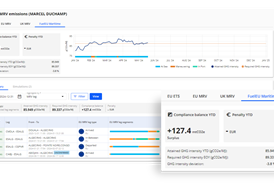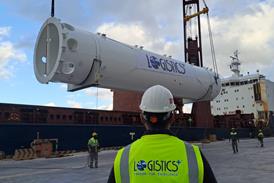October 27 - Clausen Kran took its Liebherr LTR 1060 crawler crane off-road to extend a tunnel on the Gornergrat railway in the Swiss Canton of Wallis.
The LTR 1060 was driven around tight bends and on gradients of up to 40 percent along a mountain pass to the project site, which was more than 2,000 m above sea level.
A tunnel on the Gornergrat railway - the second-highest mountain railway in Europe - is currently being extended to allow the construction of a ski run. The LTR 1060 telescopic crawler crane has already proven its qualities in high Alpine terrain on several occasions in the past, but the challenges for this job were drastically greater than usual, said Liebherr. Gravel tracks with tight bends, steep slopes and intense gradients had to be overcome on the 920 m route to the construction site.
Clausen Kran liaised with Liebherr's technical engineers to discuss the feasibility of this difficult task. The overall centre of gravity of the machine was calculated to ensure that it would not tip over and would remain manoeuvrable along the route.
The LTR 1060 was calibrated without ballast at a gross weight of 38 tonnes and the boom at an angle of 20 degrees, to ensure it could safely negotiate the pass. In addition the hook block had to be secured to prevent it swinging.
The narrowness of the track meant the crane could only traverse the snaking route with its crawler chassis retracted. However the mobility of the crane was severely restricted as a result of the poor ratio between the crawler length and the track width.
To allow the vehicle to be steered in the tight bends, 1 m lengths of square timber were placed under the inner crawler chains to act as pivots. Another recommendation from Liebherr was that the direction of travel of the crawler chassis should be selected so that the chain drives were at the rear, to ensure the crawler chain remained taut on the ground at all times.
Bringing the crane to project site using a low loader was also difficult, said Clausen Kran. A bridge with a low weight capacity had to be traversed, and the LTR 1060 had to be unloaded just before the crossing. The vehicles were then driven across the bridge one at a time. The LTR 1060 was then driven back on to the low loader, which took it up to an altitude of 1,840 m above sea level. At this point company owner, Geri Clausen, got into the crane cab and started the two-hour journey up the mountain. The final few metres had to be driven in reverse to enable the crane to access the site more easily.
"We have lots of sites where this highly manoeuvrable crane is simply perfect," said Mr Clausen.

















